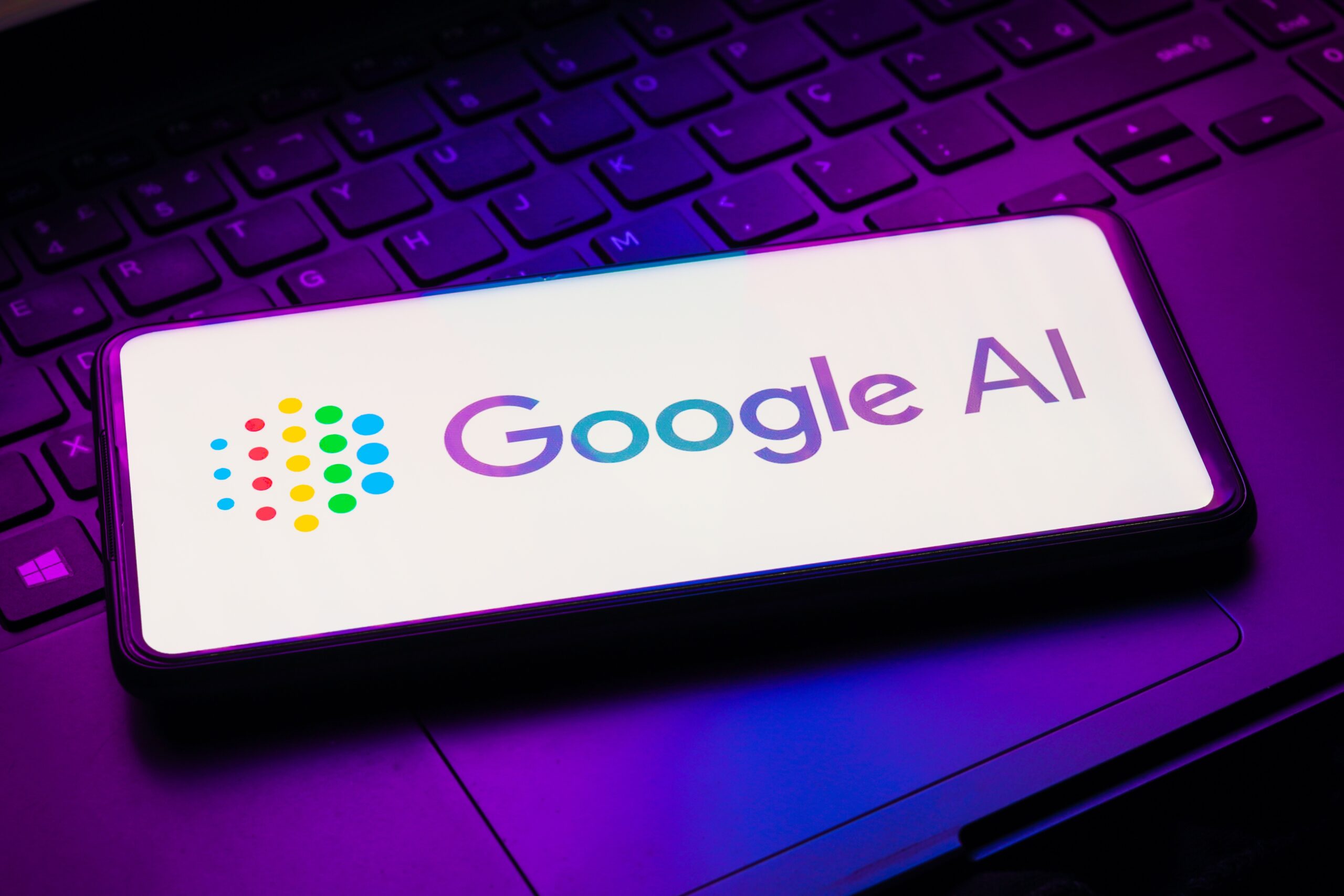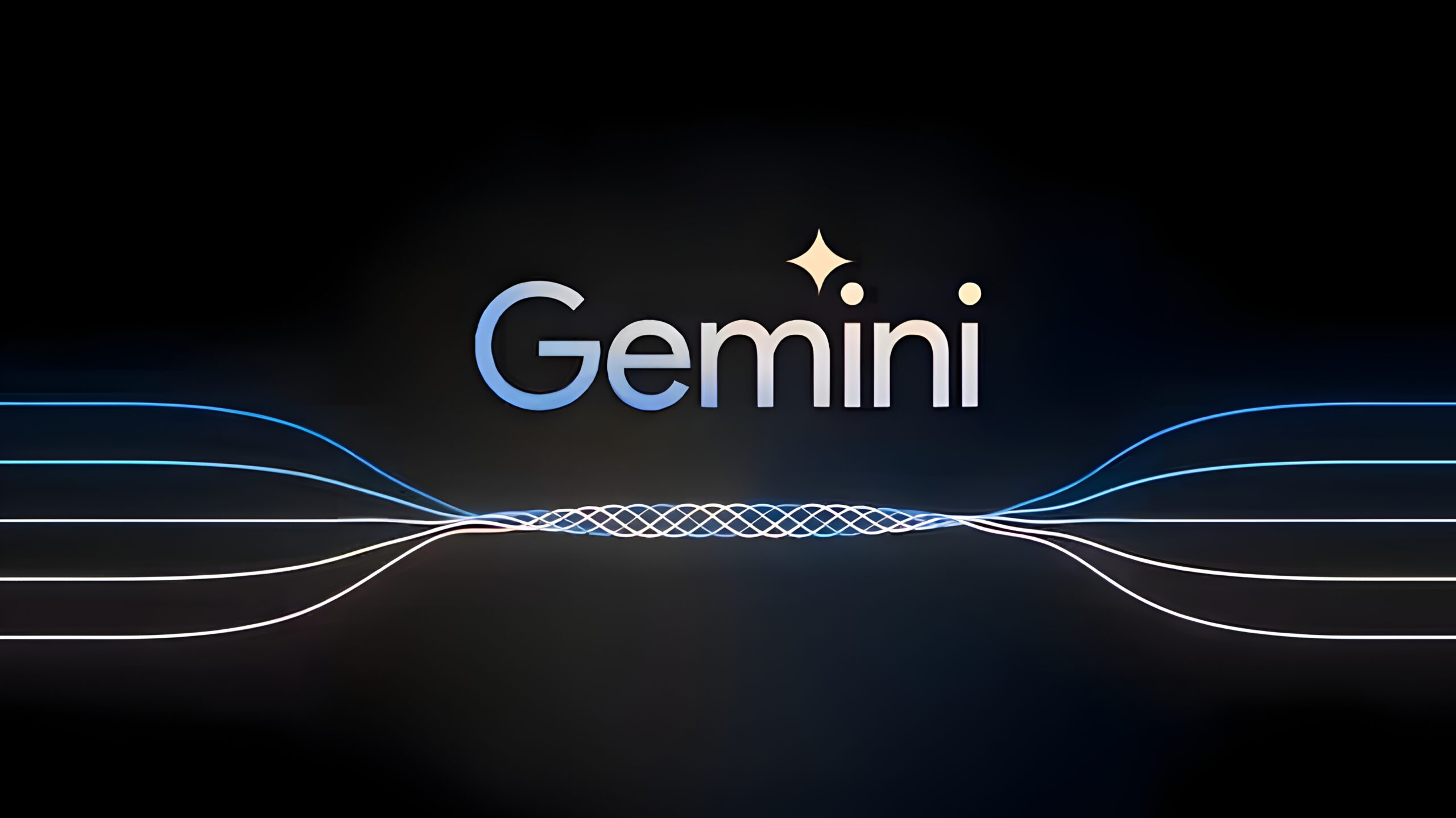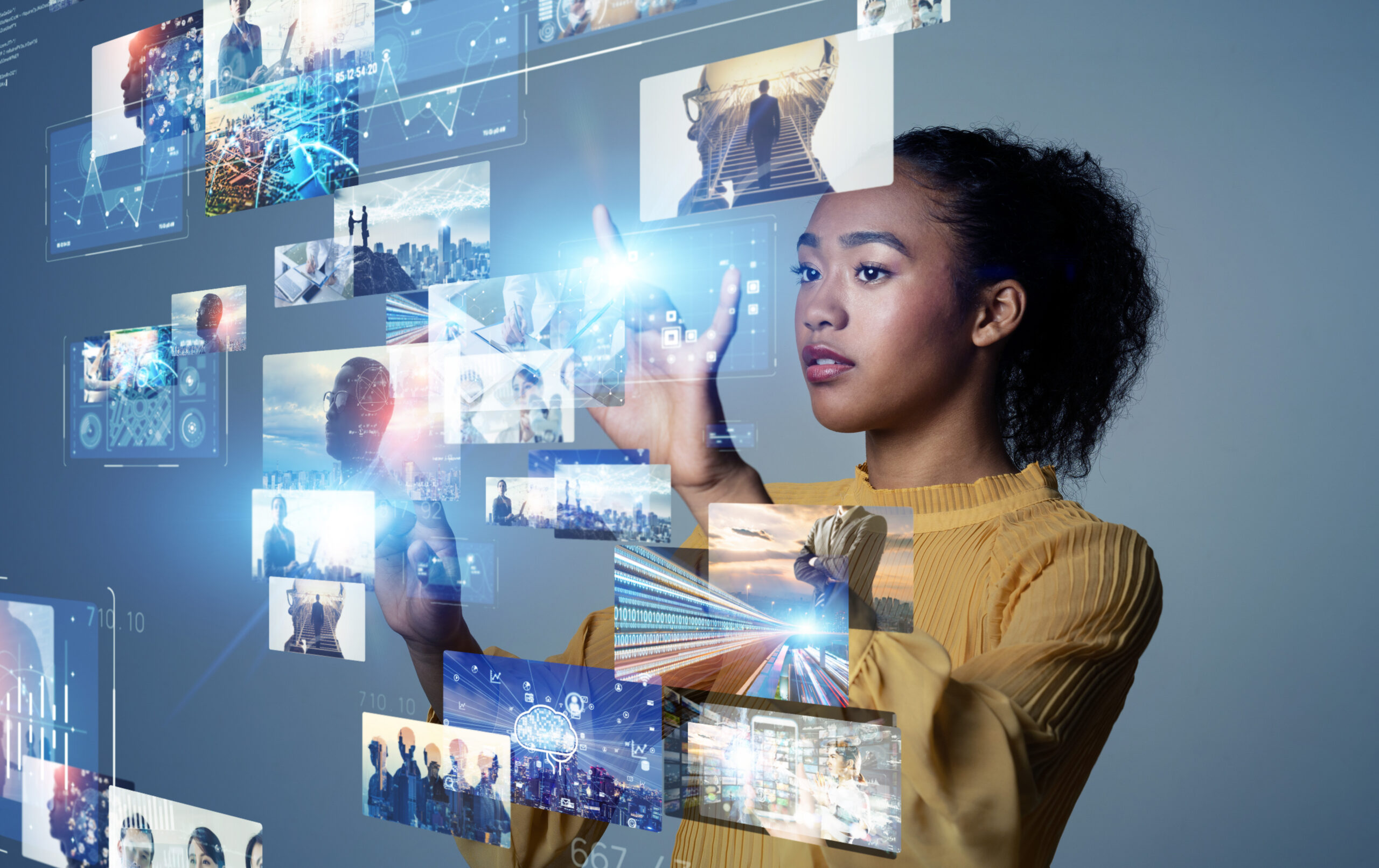
Revolutionizing Search Campaigns with Google AI in Google Ads
The advertising landscape is transforming by integrating Google AI into Google Ads, a leap made possible by the latest advancements in large language models.
This innovation is revolutionizing how businesses approach their Search campaigns, enhancing their effectiveness while minimizing effort.
This blend of cutting-edge technology and deep expertise provides businesses an unmatched opportunity to engage their audience, establishing a new benchmark for digital advertising brilliance.
Introducing Conversational Campaign Building with Gemini
Gemini’s Impact on Google Ads
Gemini leverages advanced AI and machine learning to provide a conversational interface that simplifies campaign setup.
It enables the creation of highly customized campaigns by understanding the advertiser’s business, goals, and target audience through interactive dialogue.
This results in optimized ad content, precise keyword recommendations, and AI-generated creative assets, all aimed at enhancing campaign effectiveness and audience engagement.
Advantages of Using Gemini
- Ease of Campaign Creation: Gemini’s user-friendly conversational interface demystifies the Google Ads setup, making it more accessible to advertisers.
- Content Optimization: With generative AI, Gemini proposes ad content likely to resonate with the target audience, enhancing engagement and potential conversions.
- Precision in Targeting: Gemini’s insights into business objectives lead to targeted keyword suggestions, ensuring ads reach the most relevant audience.
- Creative Enhancement: Gemini can suggest compelling visual assets to complement the ad campaign’s narrative by analyzing an advertiser’s landing page.
- Adaptive Learning: Gemini continuously refines its strategies based on campaign performance, ensuring ongoing improvement in ad effectiveness.
With its beta availability in the U.S. and U.K., Gemini’s conversational campaign building is set to reach all English-speaking advertisers soon, with further expansion into additional languages.
This progressive rollout underscores Google’s commitment to enhancing the advertising experience through AI, offering advertisers everywhere the opportunity to harness the power of Gemini in their Google Ads campaigns.
Gemini’s introduction represents a pivotal shift in digital advertising, offering a more streamlined, practical approach to Google Ads campaign management.
By tapping into Gemini’s AI capabilities, advertisers can look forward to crafting higher-quality search campaigns with reduced effort, unlocking new possibilities for achieving advertising success.
Key Performance Indicators of Google AI in Google Ads:
Businesses leveraging Google AI in their Google Ads campaigns often experience improvements in several key performance indicators (KPIs), including:
Increased Click-Through Rates (CTR): AI can optimize ad copy and targeting to make ads more relevant to the target audience, often resulting in higher CTRs.
Improved Conversion Rates: AI can lead to more effective campaigns that drive higher conversion rates by predicting user behaviour and personalizing ads to match user intent.
Reduced Cost Per Acquisition (CPA): AI’s targeting and bid optimization efficiency can lower the cost of acquiring new customers.
Enhanced Return on Ad Spend (ROAS): With AI’s ability to optimize campaigns in real-time, businesses often see a better return on their advertising investment.
Better Audience Targeting: AI algorithms can analyze vast amounts of data to identify new and niche target audiences more likely to engage with the ads.

Empowering Advertisers with AI-Driven Creativity
Empowering advertisers with AI-driven creativity represents a transformative shift in the digital advertising landscape, where the fusion of artificial intelligence and creative strategy opens up new horizons for ad campaigns.
This paradigm leverages the power of AI to enhance the creative process, making it possible to generate more personalized, engaging, and effective advertising content at scale.
The Role of AI in Creative Advertising
AI-driven tools and platforms can now analyze vast amounts of data to identify target audiences’ trends, preferences, and behaviours.
This profound insight allows advertisers to tailor their messages more precisely than ever, creating ads that resonate personally with viewers.
AI can suggest themes, tones, and emotional cues most likely to elicit positive responses from specific demographic segments.
Generative AI for Content Creation
The advent of generative AI is one of the most exciting developments in AI-driven creativity. This technology can produce original content, including text, images, and videos, based on input parameters and learning from existing content.
For advertisers, this means the ability to generate unique ad copy, compelling visuals, and even personalized video messages at a fraction of the time and cost traditionally associated with creative production.
Enhancing Creativity, Not Replacing It
The goal of AI in the creative process is not to replace human creativity but to augment it.
By handling repetitive tasks and providing data-driven insights, AI frees up human marketers and creatives to focus on campaign development’s more intuitive and strategic aspects.
This collaboration between humans and machines leads to more innovative and impactful advertising strategies.
Real-Time Optimization and Testing
AI-driven creativity extends into campaign optimization and A/B testing. AI algorithms can automatically adjust creative elements of ads in real time based on performance data, continuously refining and improving campaign effectiveness.
This dynamic approach ensures that ads remain relevant and engaging, maximizing return on investment.
Visual and AI-generated content for Enhanced Engagement
Visual and AI-generated content is revolutionizing how brands engage with their audiences, offering a new level of personalization and creativity that significantly enhances user engagement.
This innovative approach leverages artificial intelligence to create compelling visual content, such as images, graphics, and videos, tailored to the preferences and behaviours of the target audience.
Personalization at Scale
AI’s ability to analyze vast datasets allows for creating highly personalized visual content. By understanding individual user preferences, past interactions, and demographic data, AI can generate visuals that resonate personally with each viewer, increasing the likelihood of engagement and conversion.
Dynamic Content Creation
AI-generated visual content is dynamic and can be adapted in real time based on user interactions and feedback. This means that ads, social media posts, and other visual content can evolve based on what is most effective, ensuring that audiences are always presented with the most engaging visuals.
Streamlining Production
Creating high-quality visual content can be resource-intensive. AI streamlines this process by automating the creation of complex graphics and videos, significantly reducing production times and costs. This allows brands to maintain a consistent flow of engaging content without the traditional bottlenecks associated with creative production.
Consistency Across Channels
Maintaining visual consistency across various platforms is crucial for brand identity. AI can ensure that all generated content adheres to brand guidelines and visual styles, providing a cohesive brand experience across all digital touchpoints, from websites and social media to email campaigns and digital ads.
Interactive and Immersive Experiences
AI-generated content can go beyond static images to include interactive and immersive experiences. From personalized video messages to augmented reality (AR) experiences that integrate seamlessly with the user’s environment, AI can create engaging content that captivates users and encourages interaction.

A Future Shaped by Responsible AI
Google’s commitment to harnessing AI responsibly remains steadfast, guided by AI principles established in 2018. As AI continues to evolve, it promises to unlock unprecedented value for consumers and advertisers, heralding a new digital advertising innovation era.
A future shaped by responsible AI hinges on the ethical development, deployment, and use of artificial intelligence technologies. The imperative for responsible AI practices grows as AI becomes increasingly integral to various sectors, including advertising, healthcare, finance, and more.
This involves ensuring AI systems are transparent, equitable, accountable, and aligned with human values and societal norms.
Transparency and Explainability
Responsible AI requires that AI systems be transparent and their decisions explainable to users. This means that individuals affected by AI decisions should be able to understand how and why a particular outcome was reached. For example, this could involve explaining how AI algorithms target ads to specific users or why certain content is recommended over others.
Fairness and Equity
AI systems must be designed to avoid and mitigate biases that could lead to unfair treatment of individuals or groups. This involves carefully considering the data used to train AI models, ensuring it’s representative and free of historical biases. AI developers must continuously monitor and update systems to operate equitably across diverse populations.
Privacy and Data Protection
Responsible AI respects user privacy and follows strict data protection standards. This includes implementing robust security measures to protect user data from unauthorized access and ensuring that data collection and processing are transparent and consent-based, particularly in sensitive areas like personalized advertising and consumer profiling.
Accountability and Governance
Organizations deploying AI must be accountable for the outcomes of their systems. This involves establishing clear governance structures for AI development and use, including oversight bodies to assess AI impacts and address any negative consequences. It’s also crucial to have mechanisms for users to report concerns and for organizations to respond appropriately.
Human-Centric Design
AI should be designed with the well-being of humans as a central focus. This means creating AI systems that augment human capabilities, enhance productivity, and improve quality of life rather than replace human functions or diminish human control. In advertising, AI should enhance creative processes and user experiences, not manipulate consumer behaviour.
Ethical Innovation
The rapid pace of AI innovation must be balanced with moral considerations. This requires a commitment to ethical research and development practices, where potential impacts on society and individuals are carefully assessed before new technologies are deployed. Ethical innovation involves engaging stakeholders to guide AI development, including ethicists, social scientists, and affected communities.
Global Collaboration and Standards
Given the global reach of AI technologies, international collaboration is essential to establish and uphold responsible AI standards. This includes harmonizing regulatory frameworks, sharing best practices, and fostering cooperation among governments, industry, academia, and civil society to ensure AI benefits are widely distributed and risks are collectively managed.

Sorry, the comment form is closed at this time.